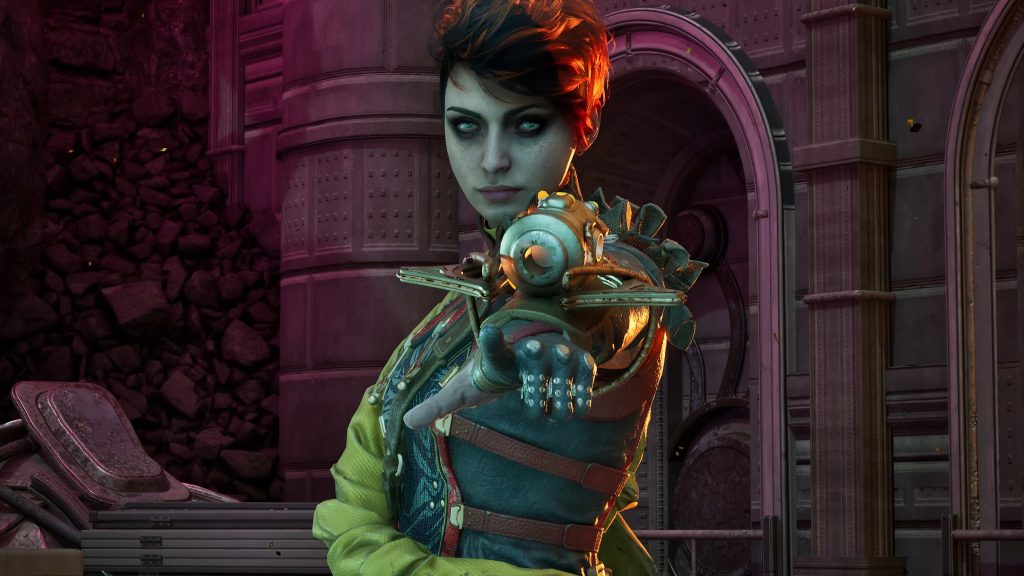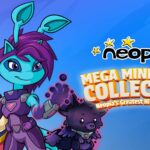Microsoft’s impressive run of RPGs continues following this year’s Avowed, setting the stage for The Outer Worlds 2 to take that momentum even further. When it launched in 2019, The Outer Worlds felt like a mixed bag while still in the shadow of Fallout: New Vegas. Now, more than half a decade later, The Outer Worlds 2 is the second major role playing game from Microsoft, and is the exact type of sequel energy the original game needed. It doesn’t make any sweeping changes to the series, but it advances its own ideas and executes everything so well that it feels like its own unique experience.
Whereas in the original game you traversed the Halcyon star system, this time around you’re in Arcadia, which contains another handful of fully designed and lively planets chock full of opportunities to explore and take on a seemingly endless number of tasks and side quests.
“As a former member of the Earth Directorate, which links Earth with all of its colonies, you are tasked with figuring out what’s going on with the rift, how to fix it, and how to end the war between the two sides.”
The game takes place some time after the events of the first game, after Auntie’s Choice, a megacorporation created through a merger of the first game’s major corporations Auntie Cleo’s and Spacer’s Choice, invades Arcadia and creates a rift anomaly that is likely to wipe out all of Arcadia if it’s not dealt with. Auntie’s Choice is attacking the Protectorate, which governs Arcadia, and they’re fighting for control of the planet cluster. As a former member of the Earth Directorate, which links Earth with all of its colonies, you are tasked with figuring out what’s going on with the rift, how to fix it, and how to end the war between the two sides.
Sounds like a tall task, right? Fortunately, as is signature for The Outer Wilds at this point, the game is lighthearted through and through, with virtually every character making some sort of joke or other remark. That rift, for example, is 6-8 years away from impact, so your companion classifies it as “low to medium priority.”
And that’s a good thing, because one of the things the game makes clear is that while you are a special agent for the Earth Directorate, you are also someone whose successes baffle virtually everyone you meet by finding ways to talk or shoot your way out of problems. Lots of characters will address it directly, and I chose to adopt that personality entirely, focusing my upgrades around those skills while avoiding any of the more erudite areas like Science or Leadership.
What The Outer Worlds 2 does as well as any western RPG I’ve played recently is balance giving you the freedom to truly role play to your liking and still giving you new ways to improve or change the game even when you’re deep into the story. There are naturally both skill points and perks, which are very familiar and work in tandem with each other. I aptly focused mainly on the Speech and Guns skills and found perks, which you can select every 2 level upgrades, that unlocked only at certain skill levels for each trait and perfectly fit my play style.

“As you get deeper into the game, you notice that the same sense of freedom and opportunity extends to the story and missions.”
On top of that, though, is the addition of Flaws, which are game-changing effects that impact some aspect of gameplay, from your movement speed or damage to your perks and loadout slots, but also have a severe negative side effect. You can accept or reject them when they appear, but if accepted they are permanent for the rest of that save file. I was offered about a dozen of these across my 25 hours through the main story but only accepted two, which made it so that I gained an extra skill point on every level but when using them, I could only add skill points to my lowest non-zero trait, locking all others.
This made it much easier for me to prioritize the couple of key traits I focused on and excel in those areas, but it also seemingly locked me into the play style I had chosen. Among the flaws I didn’t accept were one that increases your crouch speed but causes your knees to pop and alert enemies, and one that decreased my overall base damage but would boost it any time a companion damages an enemy. I was surprised at the variety and frequency the Flaws system offers, as well as the replay value that it adds on top of the inherent opportunities to focus on different skills, perks, and backgrounds.
As you get deeper into the game, you notice that the same sense of freedom and opportunity extends to the story and missions. One very early mission, for example, requires you to cross a large ravine, but there is hostile security guarding the only bridge that traverses it and seemingly no other way to cross. Your options, then, can be to help the security with something they need, help a different faction that can tell you another way across, or go in guns blazing and get there by force.

“Over the course of those dozens of hours, these choices add up in a meaningful way.”
While the late-game missions don’t give you quite as much freedom, the game does an incredible job at giving you the opportunity to feel like you’ve laid the groundwork yourself and gone through multiple steps to achieve your goals, especially because it’s almost always possible, if not the most elegant approach, to shoot your way through things.
Over the course of those dozens of hours, these choices add up in a meaningful way. The story is adeptly told if not revolutionary, but it serves more as a playground for the decisions and themes it’s portraying. Your ultimate goal surrounding the rift and settling the war doesn’t change, but along the way you can side with either or both sides and create those branching paths that change characters’ or factions’ opinions of you and alter the course of the in-game world. Auntie’s Choice, for example, is the classic corporate overlord that has become comically large and monopolistically powerful, and the Protectorate is the existing tyrannical government of Arcadia.
Clearly neither is a great option, but the game is very explicit about what choices are being made and how it will affect the story. The only drawback is that this game can get unwieldy with some of its terms and lore, especially given how many characters talk about things in a sarcastic or joking tone, and the Codex is woefully inadequate compared to the Active Time Lore that other games have started to implement.
While the story itself is familiar, the characters are all well-written and well-voiced, especially in the latter half of the game. Dialogue choices are everywhere, including a major increase in the skill checks and perk-required options that are truly punishing if you cannot complete them.

“When you’re out in the world, gunplay and exploration are king.”
There are frequently dialogue options that require information you’ve discovered in terminals or through other conversations that can completely de-escalate a conflict or change someone’s opinions, and it’s one of the more rewarding aspects of the game to successfully talk your way through a conflict without violence. With that said, I’m also intrigued by the paths and choices I missed and am excited to return for another playthrough to see how things play out in another path, especially with some of the completely opposite skills or traits selected.
When you’re out in the world, gunplay and exploration are king, and they are both drastically improved over the first game. Guns are weighty and satisfying to use with a significantly larger variety of weapon types, ammo types, and general weapon feel, and you’re inevitably going to find a couple of weapons that stick, like my shock cannon and my trusty revolver.
Gunplay works in coordination with your gadgets, which include the returning Tactical Time Dilation Gadget as well as new ones like the N-Ray vision goggles that let you see through walls and the Deflection Apparatus that puts up a temporary shield around you. The gadgets aren’t game-changing and definitely still feel like a vestige of the Fallout days, but as a wrinkle in an otherwise expansive game, these give you another reason to try everything out and feel what sticks.
Outside of combat, your exploration rounds out the experience soundly. Environments are large, beautiful, and aesthetically diverse, from the bright plants and colors of Eden to the dark and mysterious land of Praetor. There are certainly occasions where stray houses will just have a few coins and a chest, but more frequently this time, there are tons of side quests and other rewards lying around.

“I never found myself bored while trekking or even backtracking through any of the planets.”
You can walk into a house to find a note that mentions a potential quest, which you can then take to a town and have a full questline open up, or sometimes you’ll find scripted events happening that are either funny in themselves or lead to another entire quest. I never found myself bored while trekking or even backtracking through any of the planets because I was always on the lookout for something new and interesting, and it felt like the game always delivered.
The Outer Worlds 2 is a landmark sequel and It takes everything from many of the hallmarks of other games in the genre, and improves virtually everything across the board. Though some improvements are more incremental, but things like the Flaws system and the expansive dialogue options, as well as the much improved gunplay, feel like major steps forward.
Arcadia features some beautiful, open landscapes and some of the funniest, most interesting characters we’ve seen in some time, and the combat and exploration are some of the best in the genre. It’s among the best western RPGs in the past few years and firmly places the franchise as one of the best in the business.
This game was reviewed on the Xbox Series X.



